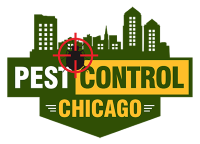The Pest Control Chicago Ideas
The Pest Control Chicago Ideas
Blog Article
7 Simple Techniques For Pest Control Chicago
Table of ContentsNot known Details About Pest Control Chicago Not known Factual Statements About Pest Control Chicago The Ultimate Guide To Pest Control ChicagoNot known Incorrect Statements About Pest Control Chicago The Best Guide To Pest Control ChicagoPest Control Chicago for Beginners
Growing or collecting a plant before (or after) a parasite exists lowers insect damage by evasion. Capturing and calculating a pest's expanding degree days can help with intending around a pest's lifecycle. Damages resistance can in some cases be accomplished by planting a plant early to make sure that the plants are stronger, much more immune, and extra tolerant to damage by the time insect bugs are existing.
By developing a small, controlled area that the parasites choose, it is feasible to draw away pests away from the main crop. 2 strategies for this are catch cropping and strip harvesting. is planting a favored host plant of an insect parasite near the key plant that is to be protected.
If required, the parasites can after that be eliminated in the trap crop. Catch crops can be any species that the bug preferseven coincide species as the primary crop - Rodent control services Chicago. If the trap plant is the very same species as the primary crop, it ought to be planted at a time that will best entice the insect away from the main crop
The Basic Principles Of Pest Control Chicago
 This technique is beneficial when gathering a catch plant because it keeps some habitat for the pest. Consequently, the pest does stagnate to find new environment in an adjacent higher worth or even more at risk crop. https://www.easel.ly/create/design?id=https://s3.amazonaws.com/easel.ly/all_easels/7228624/pstc0ntrlchg&key=pri. The methods already pointed out focus on lowering crop direct exposure to insect pests, yet it is also feasible to decrease return loss even when insect damages takes place
This technique is beneficial when gathering a catch plant because it keeps some habitat for the pest. Consequently, the pest does stagnate to find new environment in an adjacent higher worth or even more at risk crop. https://www.easel.ly/create/design?id=https://s3.amazonaws.com/easel.ly/all_easels/7228624/pstc0ntrlchg&key=pri. The methods already pointed out focus on lowering crop direct exposure to insect pests, yet it is also feasible to decrease return loss even when insect damages takes placePlant them properly and maintain the plants healthy and balanced by carefully sprinkling, fertilizing, and trimming them. If a pest or disease creates unacceptable damages regardless of preventative initiatives, choose an efficient monitoring method that will have the least quantity of impact on various other living creatures and the atmosphere.
The smart Trick of Pest Control Chicago That Nobody is Talking About
 Try to find signs and symptoms the plant displays as a result of insect activity. Analyze your plants usually. Recognize your plants to ensure that the twisted leaves, uncommon coloration, or strange-looking frameworks you see are not a regular component of the plant. Try to rule out site-related troubles by seeing to it that the soil kind, drain conditions, fertility degree, and other ecological problems are desirable for the plant.
Try to find signs and symptoms the plant displays as a result of insect activity. Analyze your plants usually. Recognize your plants to ensure that the twisted leaves, uncommon coloration, or strange-looking frameworks you see are not a regular component of the plant. Try to rule out site-related troubles by seeing to it that the soil kind, drain conditions, fertility degree, and other ecological problems are desirable for the plant.Pests and mites commonly are associated with particular plants, and they adhere to certain growth and actions patterns as the period progresses. Use recommendation publications from the library or garden facility to recognize insects (Bug removal experts in Chicago).
If so, an application of a nonselective insecticide might kill them, enabling the pest populace to rebound spontaneous by predators and parasites, which may have been offering considerable control. If a control is required, take into consideration physical or biorational approaches initially. If they are inaccessible or unwise, you may need to very carefully utilize a traditional chemical control.
10 Simple Techniques For Pest Control Chicago
 Some aphids and termites can be knocked off by spraying the plant with water. Bagworm larvae can be selected off a plagued plant. You can use traps to capture particular parasites, and obstacles to secure plants from insect strike or disease infection. One effective technique for regulating gypsy moth larvae on little numbers of trees is to place a band of folded up burlap around the tree trunk to supply an artificial resting website for the caterpillars, and after that destroy the caterpillars that gather there.
Some aphids and termites can be knocked off by spraying the plant with water. Bagworm larvae can be selected off a plagued plant. You can use traps to capture particular parasites, and obstacles to secure plants from insect strike or disease infection. One effective technique for regulating gypsy moth larvae on little numbers of trees is to place a band of folded up burlap around the tree trunk to supply an artificial resting website for the caterpillars, and after that destroy the caterpillars that gather there.In some situations, the finest option might be literally eliminating the plant and changing it with one that will certainly not be impacted by the bug or illness. The very first team consists of living microorganisms that can eliminate the bug.
An instance of an approach that utilizes a naturally occurring biochemical is the microorganism Bacillus thuringiensis (Bt). Bt has a healthy protein that is harmful to particular insects, yet safe to other organisms.
The Ultimate Guide To Pest Control Chicago
When the delicate insect bug feeds on the splashed leaves, it will certainly ingest the healthy protein and be killed. Traditional chemicals are used just as a last resource in an IPM program, however in some cases are one of the most effective news methods of control. To have the greatest impact, these products need to be used on a particular component of the plant when the pest is most prone.
In a lot of cases, environmentally secure pesticides such as horticultural oil or insecticidal soap are reliable choices - https://www.mixcloud.com/pstc0ntrlchg/. Again, applications have to be timed very carefully to have the best impact on the pest insect populace. Due to the fact that they have no residual task after they have dried out, soaps and oils are usually the choice that is the least disruptive to populaces of beneficial microorganisms
These words, from least hazardous to most poisonous are: "caution," "caution," and "threat." Use these words as standards to aid you choose the least dangerous product among the effective options. For most landscape insects, you require to consider pesticides in only the initial 2 classifications. Some chemical solutions can be applied only by applicators with special training and who are accredited by the state's division of agriculture.
Pest Control Chicago for Beginners
Refer to the Woody Ornamental Insect, Termite, and Condition Monitoring Overview, published by Penn State Extension, or to another existing referral for a checklist of products that are signed up for use on plants in your state. Read the label to ensure that you have actually selected a product that works versus the insect you have recognized, and select your timing based on professional referrals.
Report this page